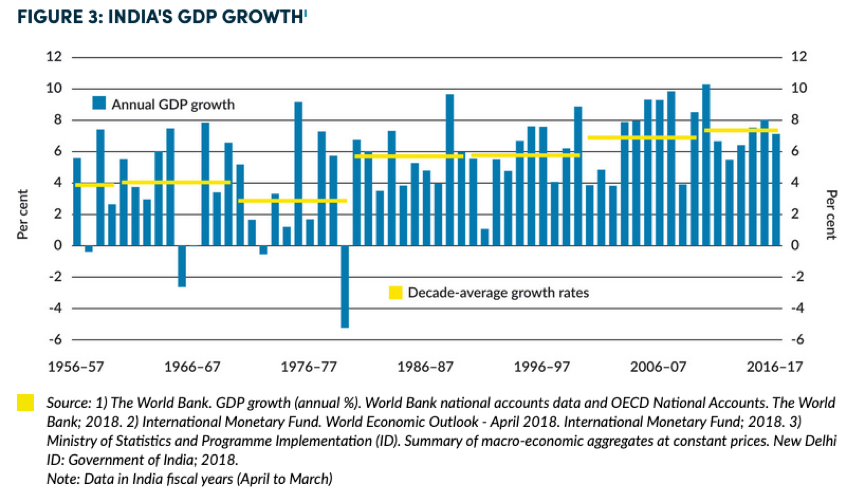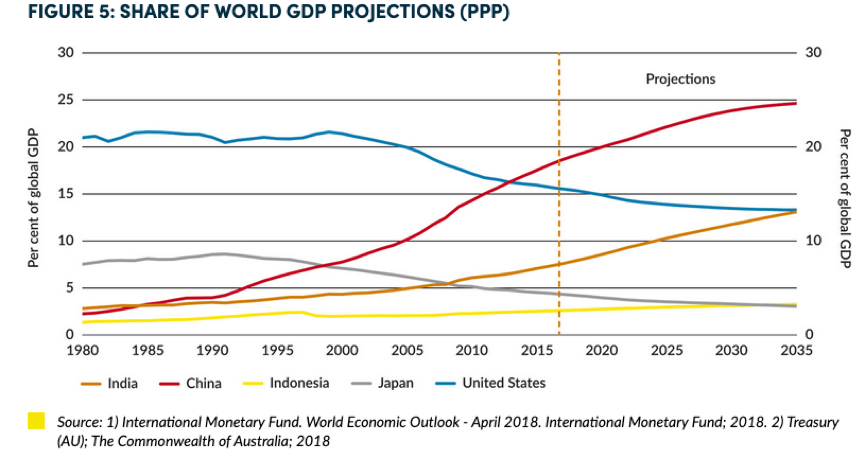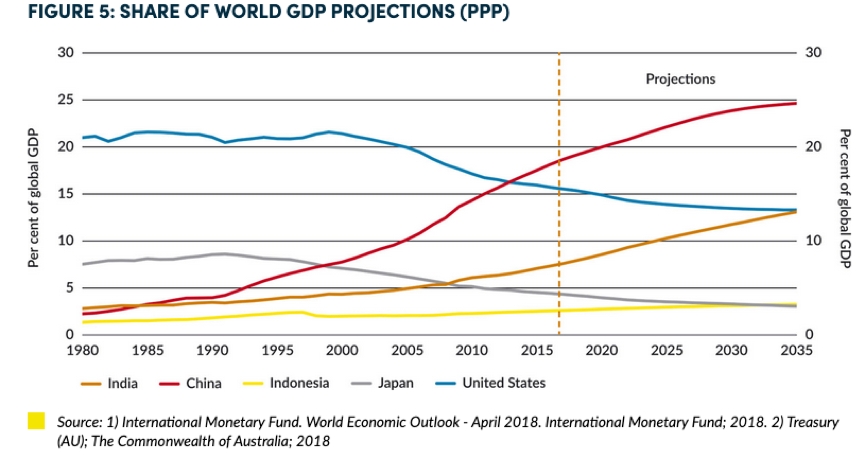For investors simply seeking growth tail winds, India has a far clearer economic growth story than China according to Douglas Isles, Investment Specialist at Platinum Asset Management, although he acknowledges that in practice investing is more nuanced.
Already the world’s 5thlargest economy, with forecast growth of 6-8%pa over the next decade, India is likely to become one of the three largest economies alongside the US and China by 2030.

It is unlikely to be another China though, as India’s Government can’t simply mandate growth in the same manner as China. India is currently where China was around 15 years ago according to Mr Isles based on GDP per capita figures. Each home to populations of around 1.4bn people, India and China are to become economic heavy weights in the coming decades.

India’s scale is extraordinary. By 2025, one fifth of the world’s working age population will be Indian. By 2030 there will be over 850 million internet users in India (currently around 500m) Source: Australia’s Dept of Foreign Affairs and Trade.
The Modi Government was re-elected in a landslide victory in May. His first term was punctuated with many reforms including the introduction of GST, bankruptcy and insolvency changes, digitisation of subsidies which has resulted in large numbers of Indians now having bank accounts, and a steep rise in infrastructure spending on building roads, rail and electrification to power the nation.
India’s road and rail networks are critical to increasing its population’s standard of living and economic prosperity as they connect farmers to markets, children to education and goods to consumers. During Modi’s first term, India built almost 200,000 km of rural roads. (that is building the road from Adelaide to Melbourne 275 times). The number of rural villages connected by roads grew to 91%, up from 56% in 2014.
Modi’s new Government has pledged 100 trillion rupees (US $1.44 trillion) over the next 5 years for infrastructure investment. This is huge considering the expenditure on roads and railways was only about 1.2 trillion rupees for the 12 months to March 2019.
Jack Lowenstein, Morphic Asset Management, believes that the infrastructure sector is one of the greatest opportunities in India and the sector presently looks cheap. He adds “financials offer the best returns in India, but having seen so many false bottoms to what is now a nearly decade long bad credit cycle, we are going to sit on the sidelines until we see momentum in the recovery story.”
Douglas Isles, empathises and says “India’s banking system has gone through a process of repair, which sets it up for the prospects of an investment boom, perhaps akin to what we have already seen in China.
This should be good for banks, and companies benefiting from investment in infrastructure. While it benefits the consumer, stocks in that area are well-liked, and the overall market, like the US, trades at all-time highs. This is a stark difference from China, but note that India is at an earlier stage of its economic evolution, and as a democracy, remains more chaotic than its northern neighbour. The paradox of markets is that a simple growth story does not make such a simple investment case.”
Investing in India through global ETF’s or actively managed funds is the obvious way of gaining exposure to the India thematic. But it is not just Indian companies that stand to prosper from India’s infrastructure boom.
Australian businesses who provide finance, maintenance / construction expertise, or other products and services could also be beneficiaries.
Some of the questions that Australian investors need to ask themselves are:
- What Australian goods are likely to be sold to Indian consumers (think A2 milk to Chinese consumers)
- What Australian expertise could be exported to India? (perhaps education, infrastructure maintenance)
- What Australian companies may be able to assist in the financing of Indian infrastructure? (Macquarie Group is the business automatically linked to infrastructure investing)
- Will the increase in infrastructure spending create the environment for another resources boom?
As legend investor Kerr Neilson (Platinum Asset Management) says “Investors have to invest on the basis of what the world is likely to be, rather than as it is now”. Therefore investors would be wise to think about ways they may be able to gain from the rise of India over the coming decades.
This article was written by Mark Draper and published in the Australian Financial Review in June 2019.

